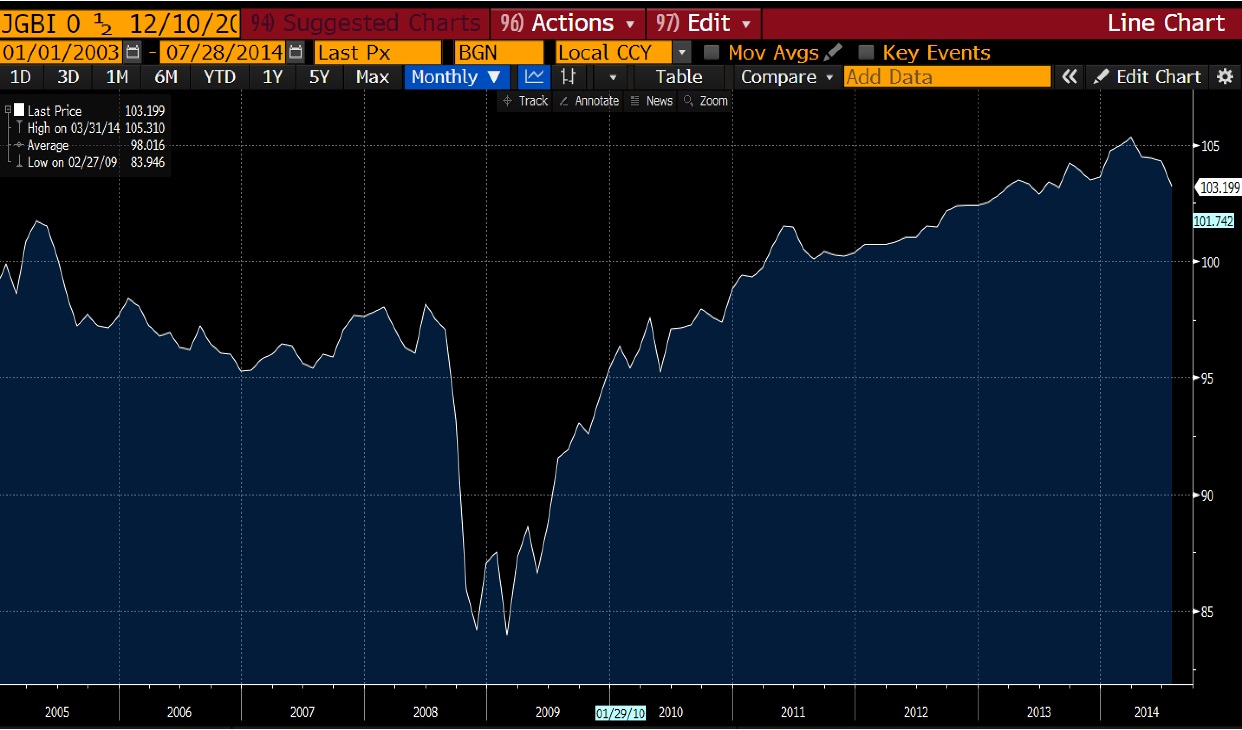

Finance
Why Are Pension Funds Falling In 2022?
Published: January 23, 2024
Discover the reasons behind the decline of pension funds in 2022 and the impact on the finance industry. Learn how to navigate the changing landscape of finance.
(Many of the links in this article redirect to a specific reviewed product. Your purchase of these products through affiliate links helps to generate commission for LiveWell, at no extra cost. Learn more)
Table of Contents
Introduction
Economic Factors Impacting Pension Funds
Pension funds play a crucial role in providing financial security to individuals during their retirement years. However, the year 2022 has witnessed a concerning trend as pension funds are facing a decline. Several economic factors have contributed to this downturn, including market volatility, demographic changes, and government policies. Understanding the root causes behind the decline of pension funds is essential for both current and future retirees, as well as for policymakers and financial experts seeking to address these challenges effectively.
The economic landscape has experienced significant shifts, leading to a ripple effect on pension funds. Market volatility, driven by geopolitical tensions, inflationary pressures, and global economic uncertainties, has created a challenging environment for pension funds to generate consistent returns. Moreover, demographic changes, such as an aging population and declining birth rates, have placed additional strain on pension funds, impacting their long-term sustainability. Additionally, government policies and regulations have influenced the operations and funding of pension funds, further contributing to the current predicament.
In this article, we will delve into the economic factors impacting pension funds in 2022, exploring the repercussions of market volatility, demographic shifts, and government interventions. By examining these interconnected elements, we aim to provide insights into the complexities surrounding pension funds and offer a comprehensive understanding of the challenges they are confronting in the present economic climate. Let's embark on a journey to unravel the intricacies of pension fund dynamics and gain valuable perspectives on the underlying causes of their decline in 2022.
Economic Factors Impacting Pension Funds
The performance of pension funds is intricately linked to various economic factors that exert influence on their sustainability and growth. In 2022, several key economic elements have significantly impacted pension funds, shaping their current trajectory and posing challenges for the future.
One of the primary economic factors affecting pension funds is market volatility. The global financial markets have been characterized by heightened volatility, stemming from geopolitical tensions, trade disputes, and the lingering effects of the COVID-19 pandemic. This volatility has posed substantial challenges for pension funds, as they strive to generate stable and reliable returns to fulfill their long-term obligations to retirees. Fluctuating market conditions have made it increasingly difficult for pension funds to achieve consistent growth, leading to concerns about their ability to meet future pension obligations.
Another critical economic factor influencing pension funds is the prevailing low-interest-rate environment. With central banks implementing accommodative monetary policies to stimulate economic recovery, interest rates have remained at historically low levels. While low interest rates can benefit borrowers, they present a formidable challenge for pension funds, particularly those with defined benefit obligations. The prolonged low-rate environment constrains the ability of pension funds to achieve desired investment returns, thereby impeding their capacity to meet pension payment obligations and maintain solvency.
Furthermore, demographic changes have emerged as a significant economic factor impacting pension funds. The aging population in many developed economies, coupled with declining birth rates, has altered the dynamics of pension fund management. As the number of retirees increases relative to the working-age population, pension funds face heightened pressure to ensure the sustainability of pension payments. This demographic shift has necessitated a reevaluation of pension fund investment strategies and asset allocation to address the evolving needs of an aging beneficiary base.
Moreover, government policies and regulations have played a pivotal role in shaping the economic landscape within which pension funds operate. Changes in tax laws, pension regulations, and retirement policies have directly influenced the funding, governance, and investment practices of pension funds. Regulatory shifts have imposed additional compliance requirements on pension funds, impacting their operational costs and investment decision-making processes. Furthermore, government interventions in response to economic crises or systemic risks have introduced new complexities for pension fund management, necessitating adaptability and resilience in the face of evolving regulatory frameworks.
As we navigate the intricate web of economic factors impacting pension funds, it becomes evident that a holistic understanding of these dynamics is essential for devising effective strategies to address the challenges faced by pension funds in 2022 and beyond. By recognizing the interplay of market volatility, interest rate environments, demographic shifts, and government policies, stakeholders can work towards implementing sustainable solutions that safeguard the integrity and longevity of pension funds.
Market Volatility and Pension Funds
Market volatility has emerged as a defining challenge for pension funds, exerting a profound impact on their investment performance and long-term sustainability. The tumultuous fluctuations witnessed in global financial markets have presented formidable obstacles for pension funds, necessitating adaptive strategies to navigate the prevailing volatility.
One of the primary repercussions of market volatility on pension funds is the heightened risk exposure across their investment portfolios. Fluctuating market conditions, driven by geopolitical uncertainties, trade tensions, and macroeconomic instabilities, have amplified the inherent risks associated with pension fund investments. As a result, pension funds have encountered heightened levels of investment risk, compelling them to reassess their risk management frameworks and asset allocation strategies to mitigate the impact of market volatility on their portfolios.
Moreover, market volatility has posed challenges for pension funds in achieving consistent and sustainable investment returns. The erratic nature of market movements has impeded the ability of pension funds to generate predictable income streams, thereby affecting their capacity to meet long-term pension payment obligations. This has prompted pension funds to explore alternative investment avenues, diversify their portfolios, and embrace innovative investment approaches to enhance resilience in the face of market volatility.
Furthermore, the impact of market volatility on pension funds extends to their funding levels and solvency positions. Sustained periods of market turbulence can erode the funded status of pension funds, leading to funding shortfalls and heightened financial strain. As pension funds grapple with the repercussions of market volatility on their funding adequacy, they are compelled to implement prudent risk management measures and funding strategies to fortify their financial positions and uphold their commitments to retirees.
Amidst the challenges posed by market volatility, pension funds have sought to adopt dynamic investment strategies that prioritize diversification, risk mitigation, and long-term value creation. Embracing a holistic approach to portfolio management, pension funds have explored alternative asset classes, integrated environmental, social, and governance (ESG) considerations into their investment frameworks, and leveraged sophisticated risk analytics to navigate the complexities of volatile markets.
As pension funds confront the realities of market volatility, the imperative to cultivate resilience and agility in their investment practices has become increasingly pronounced. By proactively addressing the impact of market volatility and fortifying their investment resilience, pension funds can endeavor to uphold their fiduciary responsibilities, safeguard the interests of pension beneficiaries, and chart a sustainable path forward amidst the ebbs and flows of global financial markets.
Impact of Demographic Changes on Pension Funds
The demographic landscape, characterized by profound shifts in population dynamics, has exerted a significant impact on pension funds, reshaping the contours of retirement planning and fund management. In 2022, demographic changes, including an aging population and declining birth rates, have precipitated multifaceted implications for pension funds, necessitating adaptive strategies to address the evolving needs of retirees.
One of the primary ramifications of demographic changes on pension funds is the altering beneficiary profile, marked by a growing population of retirees relative to the working-age cohort. The demographic imbalance, accentuated by increasing life expectancies and declining birth rates in many developed economies, has engendered a scenario where pension funds face heightened obligations to sustainably provide for a larger pool of retirees. This demographic shift has prompted pension funds to recalibrate their investment strategies, asset allocation frameworks, and long-term liability management to accommodate the evolving demographic dynamics.
Furthermore, the aging population has precipitated a fundamental reevaluation of retirement and pension benefit structures. As individuals approach retirement age and longevity increases, pension funds are confronted with the imperative to ensure the adequacy and sustainability of pension payments over extended periods. The longevity risk inherent in an aging beneficiary base has compelled pension funds to explore innovative risk-sharing mechanisms, longevity hedging strategies, and dynamic asset-liability management approaches to mitigate the impact of increased life expectancies on pension fund liabilities.
Moreover, the demographic changes impacting pension funds have underscored the significance of embracing diversified investment approaches that account for the evolving needs and preferences of retirees. The emergence of a more diverse and discerning retiree base has prompted pension funds to consider incorporating environmental, social, and governance (ESG) considerations into their investment frameworks, offering retirement products tailored to varied retirement lifestyles, and embracing technology-driven solutions to enhance member engagement and financial literacy.
As pension funds navigate the complexities of demographic changes, they are compelled to adopt a forward-looking approach that integrates demographic insights into their investment and funding strategies. By proactively addressing the impact of demographic shifts on pension funds, stakeholders can endeavor to fortify the long-term sustainability of retirement provisions, uphold the fiduciary responsibilities to pension beneficiaries, and chart a resilient path forward amidst the evolving demographic landscape.
Government Policy and Pension Funds
Government policies and regulations wield substantial influence over the operations, funding, and investment landscape of pension funds, shaping the contours of retirement provisions and fund management. In 2022, government interventions and policy initiatives have played a pivotal role in sculpting the environment within which pension funds operate, presenting both opportunities and challenges for stakeholders in the retirement ecosystem.
One of the primary areas where government policy impacts pension funds is through regulatory frameworks governing pension fund operations and investment practices. Changes in pension regulations, tax laws, and retirement policies have necessitated adaptability and compliance from pension funds, influencing their governance structures, investment decision-making processes, and member communication strategies. Moreover, evolving regulatory requirements have prompted pension funds to enhance transparency, strengthen risk management frameworks, and embrace responsible investment practices to align with regulatory mandates.
Furthermore, government policy initiatives aimed at addressing economic crises, systemic risks, and social welfare priorities have introduced complexities and uncertainties for pension funds. Responses to economic challenges, such as monetary policy adjustments, fiscal stimulus measures, and financial market interventions, have reverberating implications for pension fund investment performance, funding adequacy, and long-term sustainability. Pension funds are compelled to navigate the implications of government interventions and policy shifts, adapting their investment strategies and risk management approaches to mitigate the impact of external policy dynamics.
Moreover, government-sponsored retirement savings programs, social security reforms, and pension enhancement initiatives have intersected with the operations of pension funds, influencing member participation, retirement income adequacy, and the broader retirement landscape. Pension funds have engaged with government-sponsored retirement schemes, collaborated on financial literacy initiatives, and advocated for policy measures that bolster retirement security, reflecting the interplay between government policy and the private pension sector in shaping retirement outcomes.
As pension funds grapple with the multifaceted impact of government policy, the imperative to engage in constructive dialogue with policymakers, advocate for conducive regulatory frameworks, and proactively adapt to evolving policy dynamics has become increasingly pronounced. By fostering collaboration between the public and private sectors, pension funds can endeavor to navigate the intricacies of government policy, uphold their fiduciary responsibilities, and advance the interests of pension beneficiaries within an evolving policy landscape.
Conclusion
The challenges confronting pension funds in 2022 underscore the intricate interplay of economic, demographic, and policy dynamics that shape the retirement landscape. As pension funds navigate market volatility, demographic shifts, and government policy impacts, it becomes imperative to adopt adaptive strategies that fortify the long-term sustainability and resilience of retirement provisions.
Amidst the backdrop of market volatility, pension funds are compelled to embrace dynamic investment approaches that prioritize risk management, diversification, and long-term value creation. By navigating the complexities of volatile markets, pension funds can endeavor to uphold their fiduciary responsibilities, mitigate risk exposure, and secure sustainable returns to meet pension payment obligations.
Furthermore, the impact of demographic changes on pension funds necessitates a forward-looking approach that integrates demographic insights into investment and funding strategies. By addressing the evolving needs of an aging beneficiary base, pension funds can proactively manage longevity risk, enhance retirement provisions, and ensure the adequacy and sustainability of pension payments over extended periods.
Moreover, the intersection of government policy with pension fund operations underscores the significance of engaging in constructive dialogue with policymakers, advocating for conducive regulatory frameworks, and adapting to evolving policy dynamics. By fostering collaboration between the public and private sectors, pension funds can navigate the complexities of government policy, uphold their fiduciary responsibilities, and advance the interests of pension beneficiaries within an evolving policy landscape.
In conclusion, the challenges faced by pension funds in 2022 necessitate a holistic and adaptive approach to retirement provisions, underpinned by resilient investment strategies, demographic insights, and constructive engagement with policymakers. By recognizing the interconnected nature of economic, demographic, and policy factors, stakeholders can work towards implementing sustainable solutions that safeguard the integrity and longevity of pension funds, ensuring the financial security and well-being of retirees in the years to come.














